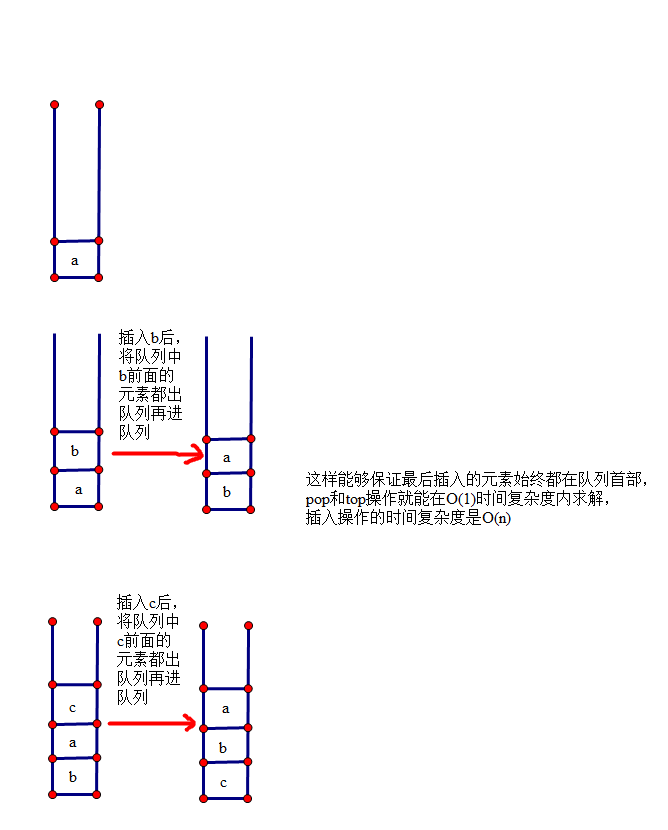225. Implement Stack using Queues
Implement the following operations of a stack using queues.
- push(x) -- Push element x onto stack.
- pop() -- Removes the element on top of the stack.
- top() -- Get the top element.
- empty() -- Return whether the stack is empty.
- You must use only standard operations of a queue -- which means only
push to back,peek/pop from front,size, andis emptyoperations are valid. - Depending on your language, queue may not be supported natively. You may simulate a queue by using a list or deque (double-ended queue), as long as you use only standard operations of a queue.
- You may assume that all operations are valid (for example, no pop or top operations will be called on an empty stack).
解析:用队列实现栈,之前做过用两个栈实现队列,所以想到用两个栈来实现队列,但是看Discuss的时候看到 只用一个队列就可以。具体是:在新元素入队后,把这个元素之前的所有的元素都出队并且重新入队。这样就能保证最后插入队列的元素始终在队列的最前端,比如插入a,b,c,d这四个元素,队列中元素的顺序依次为a,ab,abc,abcd,这样插入的时间复杂度是O(n),弹出和获取最后一个元素的时间复杂度是O(1),是不是很奇妙?图示如下:
public class MyStack {
private Queue<Integer> queue;
/** Initialize your data structure here. */
public MyStack() {
queue = new LinkedList<>();
}
/** Push element x onto stack. */
public void push(int x) {
queue.offer(x);
for(int i = 0 ; i <queue.size()-1;i++){
queue.offer(queue.peek());
queue.poll();
}
}
/** Removes the element on top of the stack and returns that element. */
public int pop() {
return queue.poll();
}
/** Get the top element. */
public int top() {
return queue.peek();
}
/** Returns whether the stack is empty. */
public boolean empty() {
return queue.isEmpty();
}
}
/**
* Your MyStack object will be instantiated and called as such:
* MyStack obj = new MyStack();
* obj.push(x);
* int param_2 = obj.pop();
* int param_3 = obj.top();
* boolean param_4 = obj.empty();
*/






















 240
240

 被折叠的 条评论
为什么被折叠?
被折叠的 条评论
为什么被折叠?








